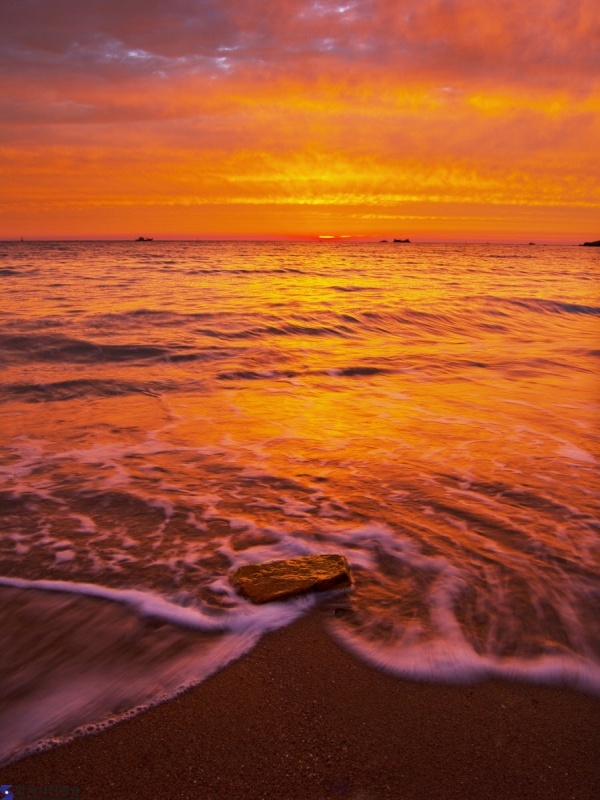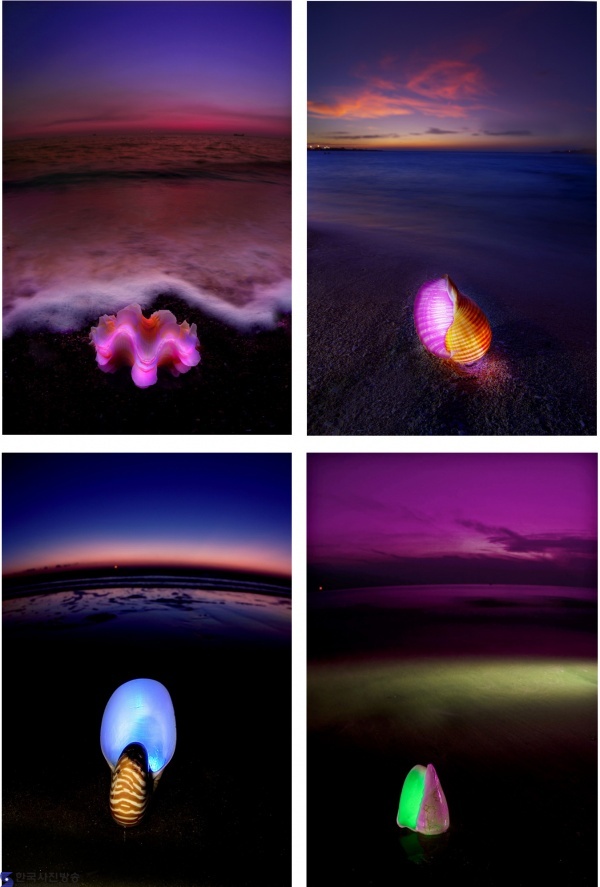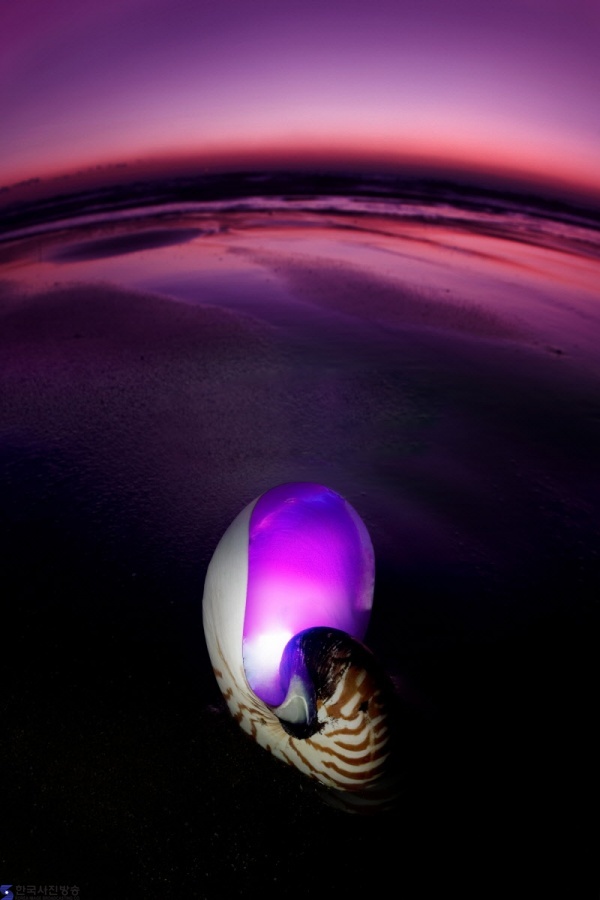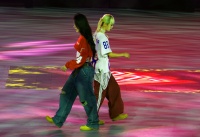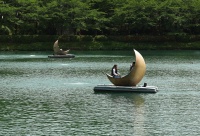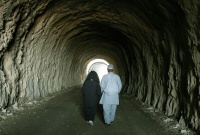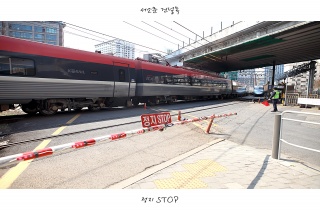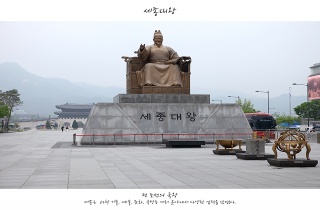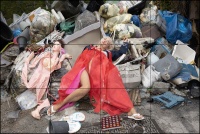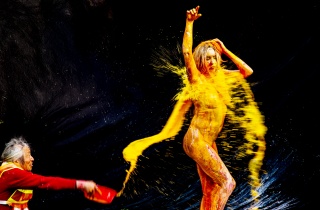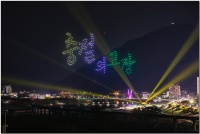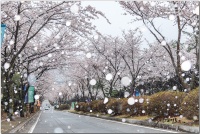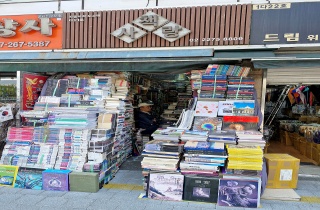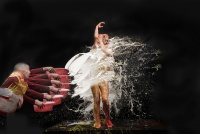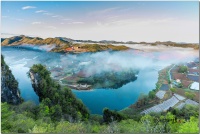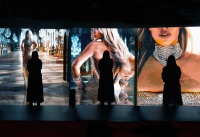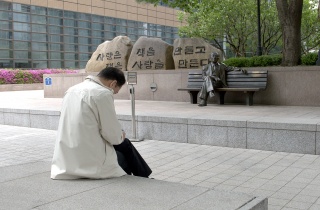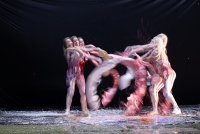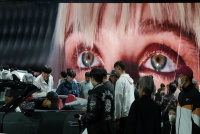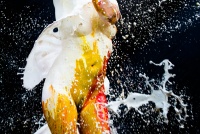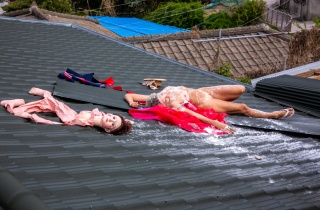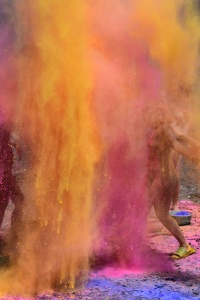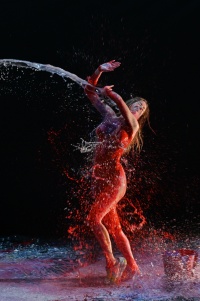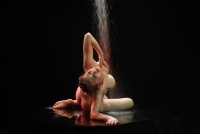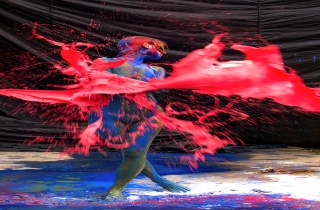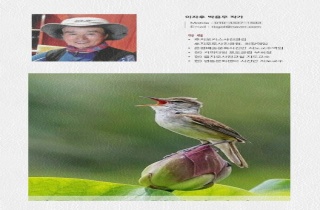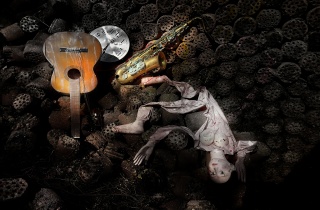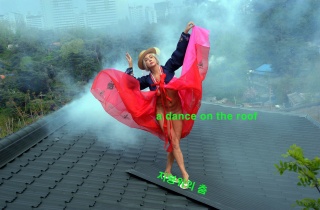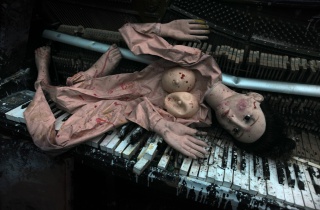○ 전시기간 2012년 12월 19일 (수) - 12월 25일 (화)
○ 전시장소인사아트센터 본전시장 1층
○ 전시작가 오 윤 경 ( Oh Yoon Kyung )
○관람시간 오전 10시~ 오후 7시
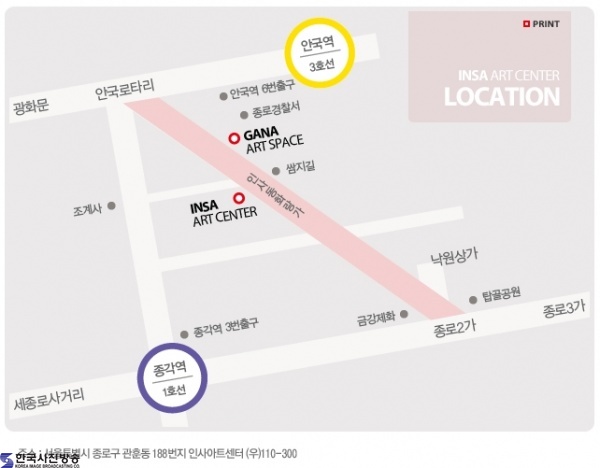

작가노트
나는 가끔 이런 꿈을 꾸곤 한다.
어딘지 정확히 알 수 없지만 꿈속에서 끝없이 바다가 펼쳐진다.
그 바닷가를 홀로 천천히 걸으면서 밀려오는 파도를 한참 바라본다.
파도가 외치는 소리에 귀를 기울여 본다.
어느덧 몸 전체를 감싸고 있는 피부의 모든 감각은 대자연의 에너지를 느낀다.
여름 폭풍 바다의 날씨는 두렵고 무섭다.
폭풍 바다를 바라보고 있노라면
심장이 뛰는 박동소리도 민감하게 느껴진다.
대자연의 에너지를 통해서 자연과 자아가 소통되는 느낌이 바로 이런 것일까.
많은 사람이 그러하듯이 나는 바다를 사랑한다.
일상에서 지친 마음의 평정을 바다에서 되찾곤 한다.
그곳 여름 폭풍은 거친 파도와 세찬 바람으로 우리 인간의 접근을 거부하는 듯
보이지만... 그렇지 않다.
바다는 그 특유의 거친 분위기 속에서도 우리 인간을 끌어안아주는 넉넉함을 지녔다.
바닷가에서 한참을 세찬 바람과 파도와 마주하고 서 있다
그 자연 속에 내 몸과 마음을 내맡기면서,
새삼 살아 있다는 생각이 떠오른다.
그런 바다를 카메라에 담아가면서 심장의 박동소리가 작아가고 있음을 느낀다
시간의 흐름안에 평화가 오고 있는것이다
일상으로 돌아가면...이런 평화의 마음을 사람들과 나누고 싶다.
나는 자연을 가까이 하는 시간만큼은 늘 기쁘다.
대자연은 자아를 바라보는 보는 거울이라 한다.
자연을 닮거나 자연의 일부가 되고 싶다.
자연 속에서 나의 과거 현재 미래의 모습을 발견하게 된다.
나에게 있어서 사진 작업은
대자연 속에서 참된 자아를 찾아 나서는 기나긴 여정이 될 것이다
자연과 ‘조응’ 하는 사적인 체득
김석원 (시각예술평론, Ph.D)
“나의 개인적 관심은 생각이나 걸음, 돌, 여행, 물, 시간 들을 이용하여 예술을 시각적인 동시에 비시각적인 그 무엇으로 만듦으로써 예술과 자연의 더욱 명상적인 비전을 낳는 데 있다” - 리처드 롱
물질 너머의 세계와 조응하다
어원적으로 자연 (natura)은 그리스어와 라틴어에서 기원 혹은 탄생이라는 관념(idea)과 관련이 있다. 다른 측면에서 자연은 인간에 의해 제작되지 않은 모든 것을 의미하기에 문명과는 반대의 의미로 이해되기도 한다. 영국의 대지 예술가인 리처드 롱(Richard Long)
은 자연에 대한 인간의 개입을 최소화해서 자연이 인간에게 소유되는 대상이 아니라 인간이 거쳐 가는 장소라는 사실을 일깨워 준다.
그는 대부분 황무지를 걸으면서 바닥에 원 혹은 선을 그리는 작업을 대중들에게 선보였다. 인간은 누구나 자연에 대해서 소유권을 주장한다는 것은 불가능하다. 인간이 대지를 걸으면서 지나가 버린 장소는 걷기 전이나 후에 아무런 변함이 없이 늘 같은 곳에 존재한다.
이러한 행위를 통해서 인간의 예술행위는 무엇인가를 제작한다는 의미보다는 자연과 세계에서 존재하는 것은 어떤 의미가 있는지 명상하는 것, 대상과 일체감을 느끼고 ‘조응(correspondence)’하는 것으로 생각한다.
대상은 사진작가의 정신적 세계와 소통하는 매개체로 작용한다. 자연의 질서에 존재하는 모든 대상은 상징적인 방식으로 작가에게 전달한다. 이때 발생하는 상징적 방식의 소통은 일방적인 것이 아니고 작가의 마음이 외부의 대상들과 조응하면서 공감을 획득한다. 심리학적으로 설명하면 내면의 ‘투사(projection)’로 설명할 수 있지만, 여기에서는 내면에서 외면으로의 일방적인 현상으로 몰고 가기 때문에 상징적 소통으로 설명하기에는 부족한 부분이 있다.
칼 융(Carl Gustav Jung)의 경우 인간의 마음이 무의식적으로 조응하는 현상을 ‘동시성의 원리’로 설명한다. 예를 들면 어제 나비를 본 꿈을 꾸었는데 그 다음 날 현실에서 나비가 자신의 앞에서 날아가는 모습을 본다거나, 좋아하는 노래를 온 종일 부르고 있다가
오후에 약속장소에서 친구를 만났는데 그 친구가 똑같은 노래를 부르는 현상을 말한다.
이처럼 무의식의 세계에서는 자아의 경계가 모호하고 의식의 세계와 소통을 할 수 있다. 이러한 논리를 밀고 가면 자신의 마음속에 있었던 어떤 상태는 외부에 있는 대상에 그대로 반영된다.
사진작가가 자연의 모습을 바라보고 사진을 찍는 행위는 대상의 물질적인 세계를 단순하게 복제하는 행위가 아니라 물질적인 세계를 통해서 물질 너머에 있는 것과 조응하는 것이다. 작가의 사진에서 예를 들어 설명하면, 그녀가 촬영한 바닷가의 물은 단순하게 H2O로 설명하면 안 된다. 그것은 흐르는 물, 고인 물, 깨끗한 물, 아우성치는 물, 잔잔한 물이다. 그녀는 물을 만날 때 상상적인 직관을 통해서 지각한다. 그것은 두려움과 평화를 느끼게 하기도 한다.
그녀가 파도치는 거친 바다를 바라보고 있을 때 작가의 마음속에 존재하는 바다도 똑같이 반응한다. 물질세계에 존재하는 바다와 작가의 마음에 존재하는 바다는 둘이지만 사실은 둘이 아니다. 이때 발생하는 이미지는 서로 떨어져 있어서 별개의 영역처럼 보이는 것을 연합시킨다. 즉 작가의 마음속에 있는 바다가 이미지를 통해서 예술이란 물질로 드러나는 것이다. 그런 의미에서 사진예술은 마음을 물질화시키고, 물질적 질서 속에 재현하는 일이다.
만약 관객이 오윤경 작가의 어떤 작품이 마음에 들었다면 그것은 그 사진을 바라보는 사람의 내면에 ‘조응’이 일어났기 때문이다. 이런 현상은 자신이 선택한 이미지 안에는 자신의 내면이 반영되기에 그렇다. 이런 이유로 거꾸로 선택한 이미지를 통해서 자신의 내면의 상태가 어떤지 조용히 들여다볼 수 있는 것이다.
오윤경의 <그해 여름> 시리즈는 개인적인 체험을 바탕으로 파도가 치는 풍경, 나무를 소재로 황량한 시간의 흐름을 대상에 ‘조응’하려는 시도가 엿보이며, 실제로는 존재하고 있지만, 현실을 벗어나려고 애를 쓴다. 이런 현상은 얼핏 사진이 현실성을 벗어나 있기에 초현실주의(surrealism)를 지향한 것처럼 보일 수 있다. 하지만 오윤경의 사진이 현실을 벗어난 현실이지만 결국은 현실을 기반으로 한다는 점, 이미지를 가공하지 않은 척 가공한 것 같은 방식을 사용했다는 점에서 초현실주의와는 차별성을 지니고 있다.
이러한 시각은 바다 풍경 사진에서도 엿보이는데 그것은 하늘과 바다의 경계가 불분명하게 표현되어서 거꾸로 사진을 바라보아도 사진에서 어떤 얘깃거리를 전달하고 있다.
작가의 내면에서 발생한 복잡한 감정들은 냉랭하고 강렬한 흑백 톤으로 사진에 옮겨진다. 감정의 파장으로 보이는 파도의 표현을 통해 자아를 찾아가는 여정이 엿보이는데, 작품에 재현되는 것은 자연, 구름, 나무와 같은 생명의 이미지들이다.
그것은 주어진 삶을 살아가면서 마음속 깊은 곳에서부터 올라오는 자신과 삶에 대한 생명의 이미지로 파악된다. 특히 바닷가에서 밀물 시기에 촬영한 소라, 달팽이, 진주조개, 꽃게의 사진은 외롭고 쓸쓸하지만 내면의 모습을 타자에게 드러내고 싶은 욕망의 표현으로 해석된다. 수평선이 활처럼 휘어져 보이는 효과는 신비스럽고 한편으로는 그 이미지가 매우 명확하게 표현되어있다.
또한, 청명한 하늘에 말라있는 나무와 구름은 담담하게 관객의 시선을 사로잡으며, 구름 속에서 뚫고 내려온 빛의 역동적인 울림과 파장은 작가의 예술에 대한 의지에 다름 아니다.
Private Learning by ‘Corresponding’ to Nature
Seok-won Kim (Visual Art Criticism, Ph.D)
“My interest is in a more thoughtful view of art and nature, making art both visible and invisible, using ideas, walking, stones, tracks, water, time, etc.” - Richard Long
Correspond to the World beyond Materials
In terms of etymology, natura is related to the idea of origin or birth in Greek and Latin. On the other hand, nature means
everything not made by men, so it is sometimes understood as a meaning opposite to civilization. British earth artist Richard Long awakens the fact that nature is not an object to be owned by men but a place they pass through by minimizing human intervention in it.
He mostly exhibited to the public a work of drawing a circle or a line on the ground walking on the wasteland. It is impossible for men to claim ownership over nature.
The place men have passed walking on the ground always exists in the same place without change before or after the walking. I think that through these actions, men’s art forms are meditating the meaning of existences in nature and the world rather than making something and identifying with and ‘corresponding’ to objects.
The objects serve as media for communication with photographers’ mental world. All objects existing in the order of the nature are delivered to artists in a symbolic way.
This symbolic way of communication taking place this time is not an one-sided way but instead the artists’ hearts sympathize by corresponding to the objects outside. Psychologically, it may be explained internal ‘projection,’ but since here it is regarded
as an one-sided phenomenon from inside to outside, there is a lack of explanation as a symbolic communication.
Carl Gustav Jung explains the phenomenon of human mind’s unconscious correspondence with a ‘principle of simultaneity.’ For example, you saw a butterfly in a dream yesterday and the next day, you see a butterfly flying in front in reality, or you sang a favorite song all day long and a friend whom you saw at an appointed place in the afternoon sings the same song. Like this, in the world of unconsciousness, the boundary of self is vague and you can communicate with the world of consciousness. If you push on this logic, a state of your mind is reflected on the objects outside intactly.
The action a photographer looks at nature and taking pictures of it is not a simple copying of the world, the material of the objects, but correspondence to things beyond the materials through the material world.
To exemplify with a photographer’s picture, the water of the sea photographed by her should not simply be described as H2O. It is flowing water, stagnant water, clean water, outcrying water, or still water. Yun-kyeong Oh meets and perceives the water through
imaginary intuitions. It may feel fear and peace.
When she is looking at the wild waving sea, the sea in her mind reacts the same. The sea existing in the material world and the sea in the photographer’s mind are two but not in fact two. An image generated this time combines things seemingly looking separate areas apart from each other. In other words, the sea in the photographer’s mind is revealed as a material of art through the image. In this sense, photographic art is a work of materializing mind and representing it in a material order.
If the audience likes a Yun-kyeong Oh's work, it is because there is ‘correspondence’ in the person who looks at the picture. This phenomenon takes place because their inside is reflected in an image selected by themselves. Consequently, through the image selected, in turn, they can see how their internal state is quietly.
Yun-kyeong Oh's 'That Summer' series suggest an attempt to ‘correspond’ the scene of waving and the deserted flow of time with the subject matter of trees to the objects based on her personal experiences, and though existing actually, but she makes efforts to get out of the reality. In this phenomenon, the pictures may seem to aim at surrealism since they are away from the reality. However, in that Yun-kyeong Oh's photography is a reality away from the reality, but consequently is based on the reality, and uses a way of
manufacturing the images as if not manufacturing them, it is differentiated from surrealism.
This perspective appears also in her sea pictures, which express the boundary between the sky and the sea vaguely, so it delivers a story in the pictures even if seen upside down.
Complex emotions generated from the photographer’s inside are moved to their photographs in a cold, intense black and white tone. Through the expression of the waves looking like the waves of her emotions, we can see the journey in which she is looking
herself, and what is represented in the work are the images of life such as nature, clouds and trees. It is understood as the images of life for her and her life coming from deep in her heart living the life given.
Especially, the pictures of conches, snails, pearl oysters and blue crabs taken in rising tide on the seashore are lonesome and
solitary but are interpreted as expressions of desire for revealing the inside to the others. The effect of the horizon looking bent like a bow is mysterious and on the other hand, its image is expressed very clearly.
In addition, the trees and the clouds dried on the clear sky calmly capture the eyes of the audience, and the dynamic echo and wave of light penetrated through and came down from the clouds are nothing but the photographer’ will to art.
part. 1 나무
쓰러지고 꺾어 있는 나무들을 애처로운 마음으로 본다.
모진 풍파 속에서
안간힘을 쓰고 버티며 살아가고 있는 것을 느낀다
과거의 아픔을 못 버리고 옆에 안고 이겨내고 있는 것이다.
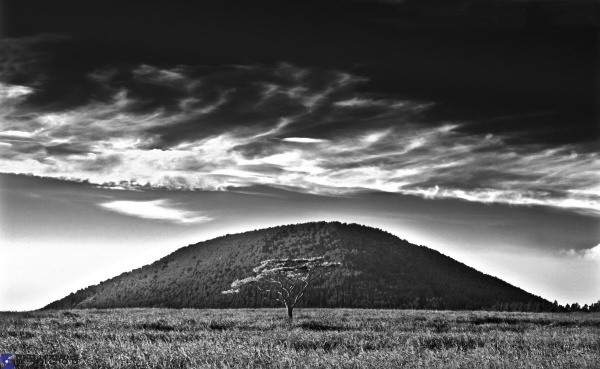

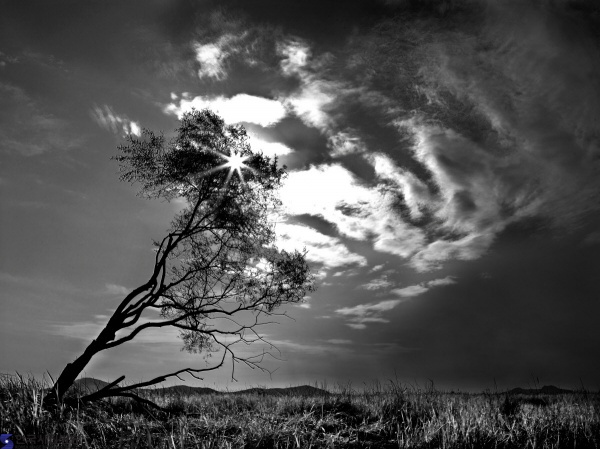

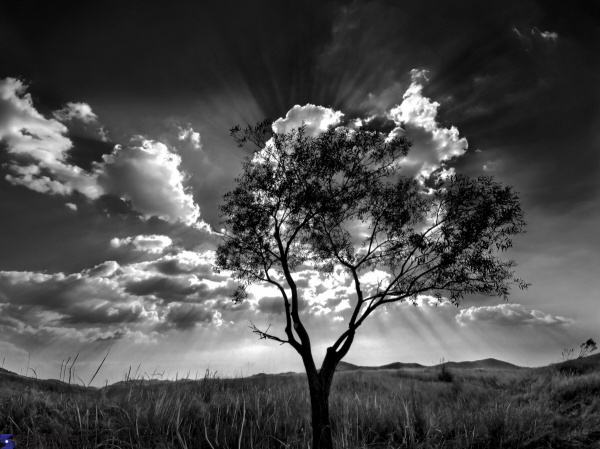

part. 2 바다
자연에서 파도를 찍고 있으면
무서움과 새로운 도전에 가슴이 설레면서 마음을 뺏겨 버린다.
여름 폭풍 파도 안에 들어가 파도를 알려고 하니 파도를 알 수가 없었다.
한참후 깨달은 사실인데
그것을 알고 싶으면 몇 걸음 뒤에 서 있어야 했다
내 안에 갇혀 나를 발견하는 것은 절대로 쉬운 일이 아니라는 사실을 깨닫는다.
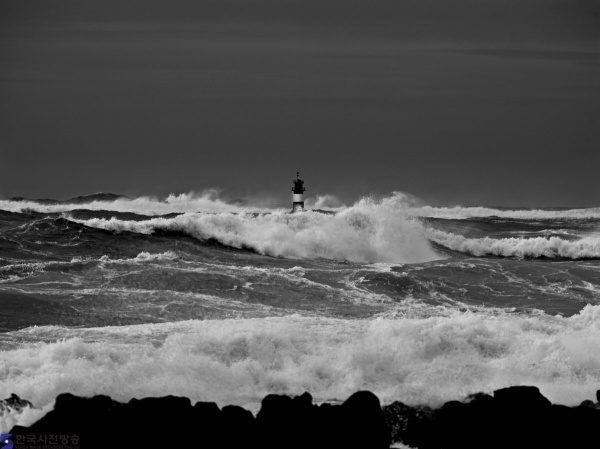



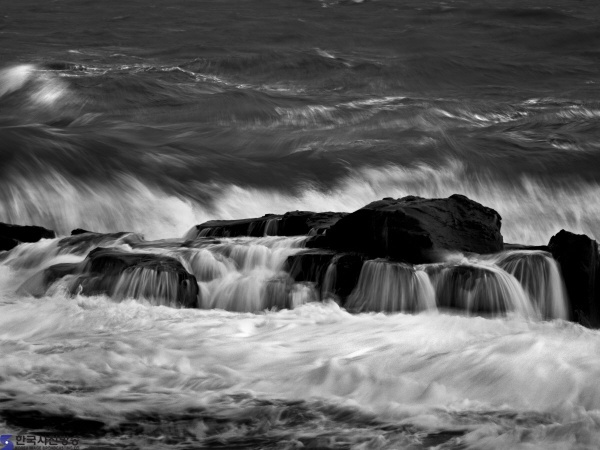

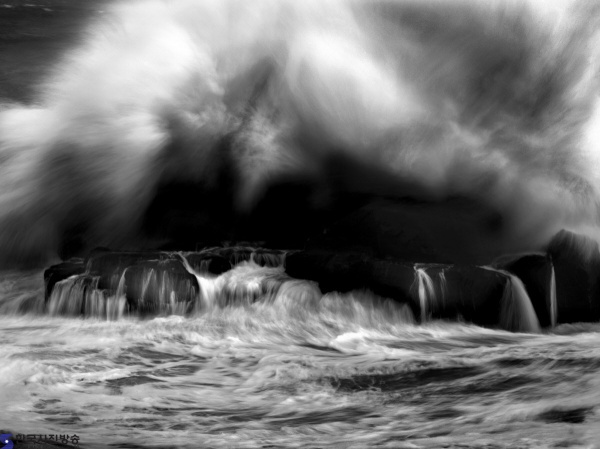

part. 3 한여름 밤의 꿈
자연은 시간시간 다른 모습으로 우리를 반긴다.
그 안에서
꿈이 많은 소녀처럼
순수하고 청순했던 그 젊은 시절로.... 세월에 순응하며
어두움에서도 끝까지 나를 가꿔가는
용기있는 아름다운 여인이고 싶다.
